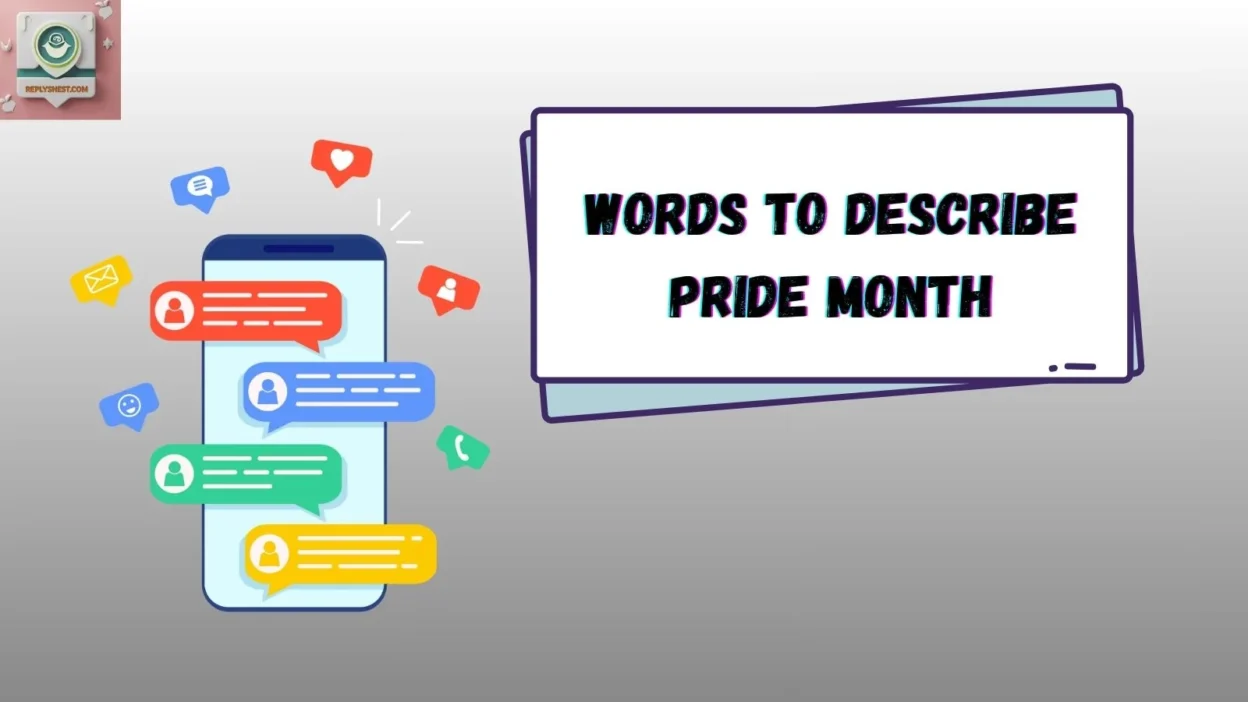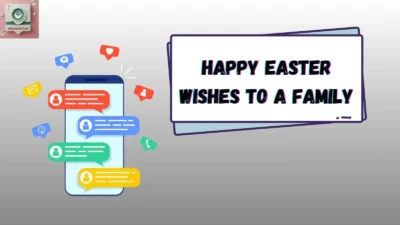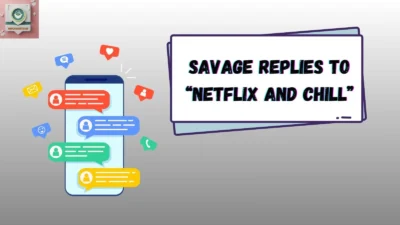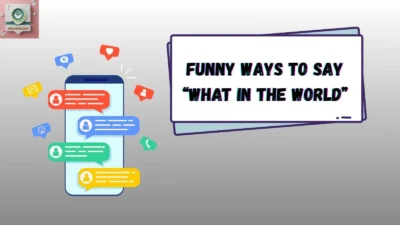Every June, the world comes together to celebrate Pride Month, a time filled with love, diversity, and freedom. It’s more than parades and parties—it’s a reminder of history, resistance, and the achievements of activists who fought for equal rights. Growing up in a city that embraced inclusion, I saw how Pride transformed fear into courage and shame into self-love. It was about belonging, about seeing individuals from the LGBTQIA and queer communities stand together with allies and advocates, celebrating their authenticity and existence. Every march and gathering I attended reflected unity, dignity, and hope—each color of the rainbow telling its own story of liberation and strength. Words to Describe Pride Month.
To me, Pride Month is deeply human—a mix of empowering experiences, uplifting stories, and beautiful expressions of identity, inclusion, and intersectionality. You see people from New York (NY) to every corner of the globe using Instagram, Twitter, and Facebook to highlight messages of equality, kindness, and understanding. From Stonewall to modern movements, names like Marsha Johnson, Sylvia Rivera, Audre Lorde, and James Baldwin continue to inspire confidence, bravery, and empowerment. Whether it’s an organization fighting discrimination, a friend showing tolerance, or a community embracing diversity, every act adds value, worth, and vision to this ongoing story of progress, freedom, and humanity.
1. Empowering
Pride Month is often described as empowering because it helps individuals embrace their true selves without fear or shame.
Best Use: Use this when highlighting personal growth, community strength, or self-expression.
Not to Use: Avoid it when describing something that doesn’t inspire or uplift.
Other Ways to Say: Inspiring, strengthening, liberating
Example: “Pride Month is an empowering reminder that every voice deserves to be heard.”
2. Inclusive
The heart of Pride Month beats to the rhythm of inclusion—welcoming everyone, no matter who they are or whom they love.
Best Use: When emphasizing unity and acceptance.
Not to Use: In contexts that exclude or generalize groups.
Other Ways to Say: Welcoming, open, accepting
Example: “The parade felt so inclusive, bringing together people from all walks of life.”
3. Vibrant
Pride Month is vibrant—a celebration full of color, creativity, and life.
Best Use: To describe visuals, events, or people full of energy.
Not to Use: When discussing serious or somber topics.
Other Ways to Say: Colorful, lively, radiant
Example: “The streets were vibrant with rainbow flags and joyful faces.”
4. Courageous
Pride Month honors those who’ve been courageous enough to stand up for their identity.
Best Use: When referring to bravery in the face of discrimination.
Not to Use: For casual or trivial bravery.
Other Ways to Say: Brave, bold, fearless
Example: “The first Pride marchers were truly courageous, paving the way for generations to come.”
5. Joyful
At its core, Pride Month is joyful—it’s about love, laughter, and liberation.
Best Use: To describe celebrations, parades, and self-expression.
Not to Use: When referring to tragic or reflective moments.
Other Ways to Say: Cheerful, happy, radiant
Example: “There’s something beautifully joyful about seeing people dance freely in the streets.”
6. Authentic
Pride Month encourages everyone to live authentically, embracing who they truly are.
Best Use: When emphasizing truth, self-expression, or integrity.
Not to Use: In contexts where authenticity doesn’t fit (like describing objects or brands).
Other Ways to Say: Genuine, real, true
Example: “Pride reminds us how powerful it is to be authentic in a world that often asks us to hide.”
7. United
Pride is about standing united—one community, many identities, one purpose.
Best Use: To describe solidarity or togetherness.
Not to Use: When discussing individual experiences.
Other Ways to Say: Connected, together, in harmony
Example: “We marched united, showing that love has no boundaries.”
8. Hopeful
Even after decades of struggle, Pride Month remains deeply hopeful.
Best Use: To express optimism about the future.
Not to Use: In contexts focusing on despair or anger.
Other Ways to Say: Optimistic, uplifting, inspired
Example: “Every Pride flag is a hopeful symbol of progress.”
9. Revolutionary
Pride started as a revolutionary act of resistance—and that spirit continues today.
Best Use: To describe activism or historic change.
Not to Use: In lighthearted or purely decorative contexts.
Other Ways to Say: Groundbreaking, transformative, radical
Example: “Stonewall was more than a riot—it was a revolutionary turning point.”
10. Resilient
The LGBTQ+ community’s story is one of being resilient through challenges.
Best Use: To describe strength in adversity.
Not to Use: When the tone is carefree or purely celebratory.
Other Ways to Say: Strong, enduring, unyielding
Example: “Pride Month honors the resilient spirit that never gives up.”
11. Colorful
From parades to flags, Pride is colorful in every sense—visually and emotionally.
Best Use: When describing energy, creativity, or visual celebration.
Not to Use: For serious or solemn contexts.
Other Ways to Say: Bright, vivid, dynamic
Example: “The colorful banners made the entire city come alive.”
12. Loving
Above all, Pride is about love—love for self, others, and community.
Best Use: To describe compassion and acceptance.
Not to Use: In contexts that are formal or distant.
Other Ways to Say: Caring, kind, affectionate
Example: “The air felt loving, filled with hugs, smiles, and acceptance.”
13. Fearless
Pride celebrates those who are fearless in being themselves.
Best Use: To describe individuals or actions defying prejudice.
Not to Use: For minor acts of confidence.
Other Ways to Say: Brave, bold, confident
Example: “Every drag queen on that stage was absolutely fearless.”
14. Liberating
Pride is liberating—it frees people from shame and silence.
Best Use: To describe emotional or social freedom.
Not to Use: When the topic isn’t about release or change.
Other Ways to Say: Freeing, releasing, uplifting
Example: “Dancing in the parade felt liberating, like breathing in pure acceptance.”
15. Radiant
Pride Month radiates joy and acceptance—it’s truly radiant in spirit.
Best Use: To describe glowing happiness or confidence.
Not to Use: In serious or melancholic tones.
Other Ways to Say: Glowing, luminous, shining
Example: “Their smile was as radiant as the rainbow flag behind them.”
16. Historic
Pride Month carries historic significance, honoring the long fight for equality.
Best Use: When referring to important milestones or events.
Not to Use: In casual or non-historical discussions.
Other Ways to Say: Significant, monumental, legendary
Example: “The Stonewall uprising remains a historic symbol of resistance.”
17. Passionate
Pride is fueled by passion—for justice, for love, for expression.
Best Use: To describe activism or strong emotions.
Not to Use: For mild or neutral tones.
Other Ways to Say: Zealous, fiery, dedicated
Example: “Their passionate speech brought everyone to tears.”
18. Celebratory
Pride Month is deeply celebratory, filled with music, dance, and joy.
Best Use: When describing festivities or positive gatherings.
Not to Use: When talking about solemn remembrance.
Other Ways to Say: Festive, jubilant, cheerful
Example: “The atmosphere was purely celebratory, bursting with energy.”
19. Progressive
Pride represents a progressive step toward equality and inclusion.
Best Use: When discussing change, rights, or awareness.
Not to Use: In apolitical or neutral settings.
Other Ways to Say: Forward-thinking, modern, evolving
Example: “The company’s progressive Pride initiatives made employees feel truly seen.”
20. Transformative
Pride can be transformative—changing how people see themselves and others.
Best Use: To express deep emotional or social impact.
Not to Use: When describing surface-level change.
Other Ways to Say: Life-changing, impactful, eye-opening
Example: “Marching in my first Pride parade was a transformative experience.”
21. Proud
The simplest word of all—proud—captures the heart of Pride Month.
Best Use: To express self-love and acceptance.
Not to Use: When the tone is sarcastic or dismissive.
Other Ways to Say: Confident, self-assured, affirmed
Example: “I’m proud to be part of a community that loves without limits.”
22. Supportive
Pride is also about being supportive of others’ journeys.
Best Use: To describe allyship and encouragement.
Not to Use: If the focus isn’t on compassion or care.
Other Ways to Say: Encouraging, caring, helpful
Example: “Being a supportive ally means showing up and speaking out.”
23. Expressive
Pride is beautifully expressive, encouraging creativity in every form.
Best Use: When referring to art, fashion, or individuality.
Not to Use: When the subject lacks creativity.
Other Ways to Say: Artistic, open, communicative
Example: “Their expressive makeup told a story of courage and joy.”
24. Reflective
Beyond celebration, Pride Month is also reflective, reminding us of the struggles faced.
Best Use: For thoughtful or historical discussions.
Not to Use: For lighthearted or purely joyful moments.
Other Ways to Say: Thoughtful, meditative, introspective
Example: “It was a reflective moment as we remembered those who fought for our rights.”
25. Unapologetic
Pride is unapologetic—it doesn’t shrink or hide; it shines boldly.
Best Use: To describe confidence in identity.
Not to Use: When humility is the focus.
Other Ways to Say: Bold, unashamed, assertive
Example: “Their unapologetic spirit reminded me what Pride truly means.”
Conclusion
Pride Month is a tapestry of emotions—joy, courage, authenticity, and love. These words don’t just describe it; they bring its spirit to life. Whether you’re writing a message, planning a post, or simply reflecting on what Pride means to you, use language that uplifts and honors the community’s journey.
As someone who has attended multiple Pride events, I’ve seen how a single word—like empowering or unapologetic—can make someone feel truly seen. Words have power; use them with kindness, awareness, and heart.



